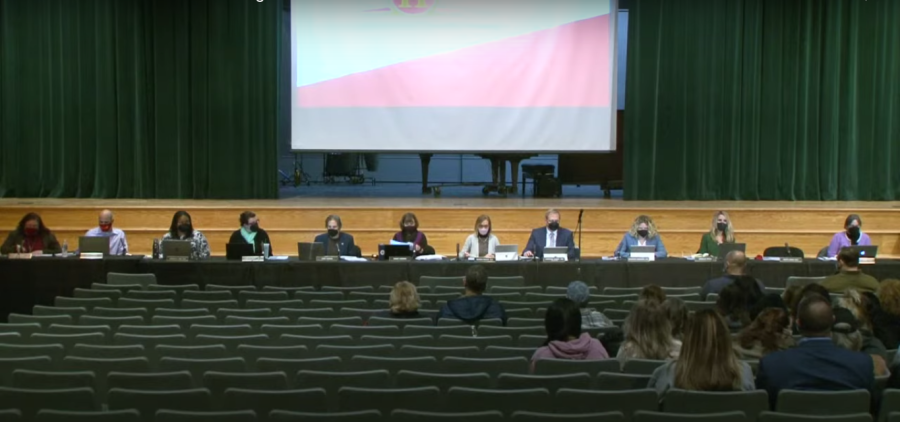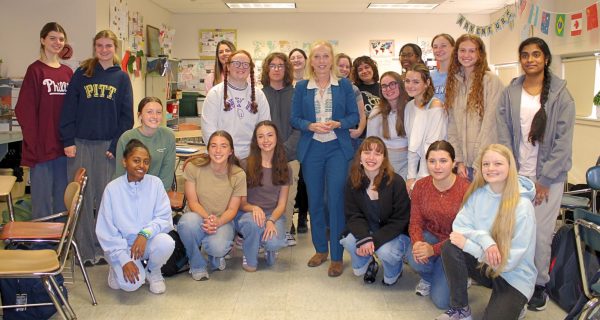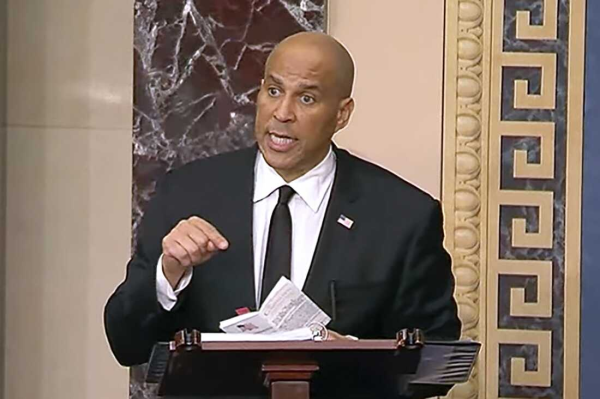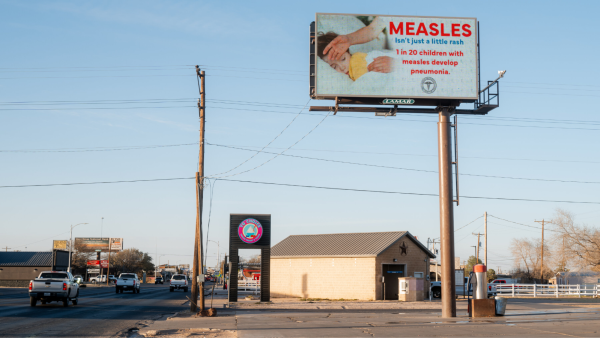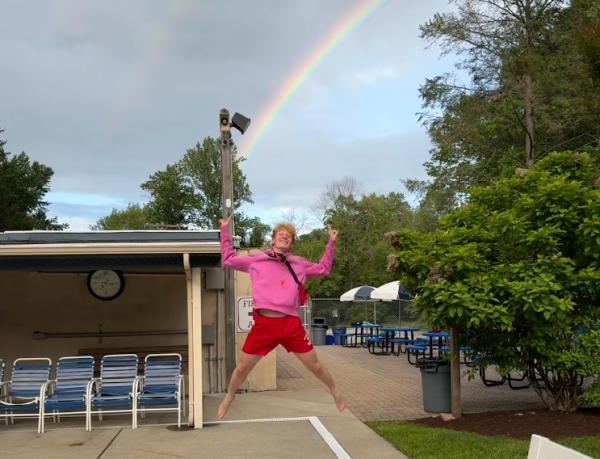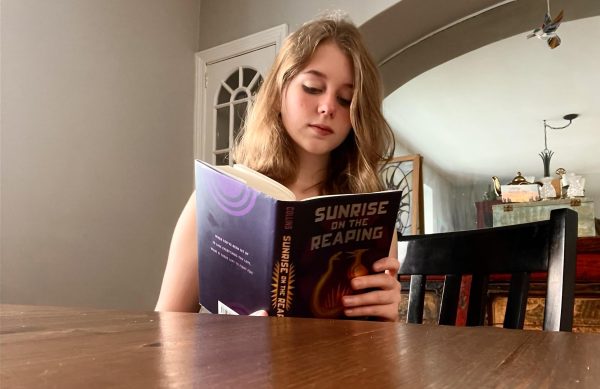Updates and Perspectives on Haverford’s COVID-19 Policies
School District of Haverford Township
Haverford’s School Board discusses policies surrounding COVID-19 and mask mandates.
On December 10, 2021, the Supreme Court of Pennsylvania overruled the state-wide masking mandate which had been put in place by the Wolf Administration. The Court ruled in a 6-0 majority with all justices concurring that the legality of mask mandates has no basis in the PA constitution. By vacating the mandate, the Court left it to individual school districts to decide whether to require masks for students, faculty, and staff. The Haverford Township School District has continued to follow the mandate as a result of the major uptick of COVID-19 cases due to the Omicron variant during January 2022. By mid-February, cases had significantly decreased.
Haverford has adhered to CDC guidelines based on the scientific facts that masking is an effective suppressant of Covid. It is important to understand the objective science behind masking before discussing the different perspectives regarding mask-wearing at Haverford.
Effective masks have been measured to prevent up to 0.1 microns of particles from getting into the mouth and nose area (where the virus would most commonly be transmitted). The COVID particle can go down to 0.125 microns, which may seem too close to the 0.1-micron threshold, but microscopic data has found that COVID particles are kept in bunches. This means that particles of 0.125 microns would not be alone; they would be compact with other particles making their density higher than the minimal density of 0.125 microns. The best mask to fight off these particles is the N-95 mask, recommended by the CDC. Regardless of how individuals feel about masks, the data is clear – wearing a mask reduces the spread of COVID and prevents it from getting into your system.
Masking and COVID policy issues have been the main topics of recent Haverford Township School Board meetings. At these events, many different perspectives on the district’s health and safety protocols have been expressed, some in opposition, some in support. The strong objections of individuals who do not support the district’s safety measures, such as mask mandates, have been heard at recent school board meetings. However, the elected board members have voted to follow the CDC guidelines as well as other health-conscious options to slow the spread of COVID-19. The past two votes of the district’s School Board have been in favor of maintaining the masking mandate in Haverford’s schools.
The board has complied with the PA Supreme Court’s decision, given that the court’s opinion allowed individual school districts to continue the mask mandate. This decision has been met with scrutiny by members of the community who are present at board meetings. The board has also decided to eliminate contact tracing with the exception of cafeteria spreading. This decision was justified by the recent reduction of positive cases throughout the district as well as the difficulty in maintaining a thorough contact tracing system.
To assess perspectives on these issues, we took to the hallways and talked with Haverford High School students and faculty about school masking, vaccines, and other health and safety policies.
When asked about the recent state Supreme Court decision, Senior Emilia Gonzalez said, “It does concern me. (The decision) will only add to people and schools not wanting to wear masks.” Many share similar concerns and believe that the court decision will decrease the likelihood of mask use among students across the state, thus increasing the spread of the virus. When asked if she was concerned with the court’s decision, Government teacher Devona Jackson said, “No, so long as local school districts still have the ability to make decisions based on their data and their student population.” Haverford has followed guidelines provided by both the CDC and the Children’s Hospital of Philadelphia, and many community members feel that the district’s adherence to these safety measures is the correct thing to do. As of now, the State Supreme Court’s decision has not led to significant changes at Haverford.
The board’s decision to remove contact tracing in classrooms has been perceived differently among the student population. Senior Abby Voli commented, “I would want to know if someone around me had Covid so that I can take the necessary steps to stay home and stay away from my friends.” Removing contact tracing has made it more difficult for students to have important information regarding positive cases. Gonzalez said, “Informing someone who has been in close contact with a covid-positive person is one of the most responsible things a school can do. Students who have family members with auto-immune deficiencies should be aware of their chances of COVID exposure.”
Those who have criticized the district-wide mask mandate have argued that masks prevent facial expressions and restrict sound, thus making dialogue and classroom learning difficult. However, many high school students have not found masks to be a significant impediment to their education and social life in school. “I feel like I am less self-conscious when wearing a mask because no one can see my face. I’ve been more focused. Wearing masks has not negatively impacted my educational experience at all,” stated Voli. When asked to explain how masking impacted her teaching experience, Jackson stated, “Being virtual had a greater impact on how I teach than masking. It took a little bit longer to get to know my students with masks. It was zoom and the turned-off cameras that really made it difficult for me to connect with students. Zoom affected the motivation of a lot of students.”
It is clear that the District has carefully followed the findings of public health experts. Although it is difficult to predict the state of the pandemic in the coming months, cases are currently decreasing in Haverford schools as spring approaches. This may lead to less stringent COVID policies, such as the end of the mask mandates. If these case trends continue, the pressure on the school board to remove mandates will likely increase and the district could see changes in its health and safety policies. Still, Gonzalez said, “If everyone were vaccinated, I would feel way more comfortable lifting the mask mandate. A lot of younger kids still cannot get vaccinated, so it’s difficult to apply this to the entire district. If there were more ways to make people accountable, like encouraging testing every so often, then I would feel more comfortable,” said Gonzalez.
Other students believe that lifting the mask mandate should happen sooner rather than later. Senior Nick Kemp said, “It’s important to test optional masking now before the next school year starts, so more information about how many people will optionally wear masks can be collected.” Kemp believes that “. . . temporarily lifting the mandate will also allow cases to be monitored so that administrators can make accurate decisions for the future.” According to students who share this perspective, the enforcement of masks in the high school has not been strongly effective. “People who do not want to wear masks are already wearing them around their chins in the halls and in class, and that is the same as not wearing a mask at all,” said Kemp.
As the school year continues to progress, members of the school board and the community, in general, will have to decide whether loosening these measures and returning to normalcy is reasonable, or if doing so is too big a risk to take.



